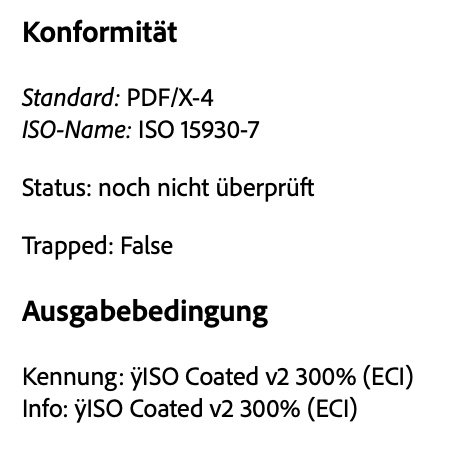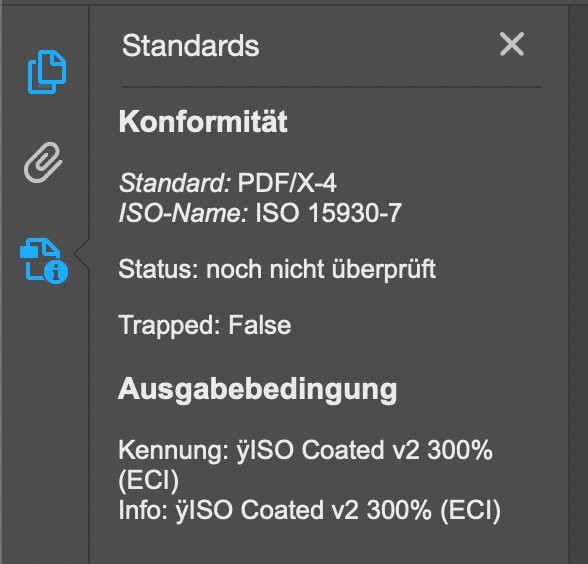-
Posts
69 -
Joined
Everything posted by Optische Ausrichtung
-

Canva
Optische Ausrichtung replied to Ash's topic in Affinity on Desktop Questions (macOS and Windows)
Vectorstyler is a terrific vector editing application and is not yet SaaS -
It's amazing how long it takes for a company that can launch such a great software package to fix elementary bugs. @Serif/Affinity: Please don't focus on new features. Do your homework first! And please do it on time. The best software is useless if you can't use it properly. (German-speaking users in particular have to deal with really annoying bugs.)
-
Yes. The black curve is present. Duplicate this curve and set a contour width of 6 cm (yellow in the image). Select the "Expand Stroke" function. Delete the points marked blue in the image. The result is a closed curve that can be opened with the Break Curve tool, adding a point if necessary. (In the image, this is approximately the light gray part.) Delete the superfluous points. The result is the red curve. I hope you get it to work on the iPad.
-
If I understand the problem correctly, the questioner is looking for an "expand stroke function" that only works on one side of the curve. Perhaps the desired result can be achieved with the function and a little reworking. Of course, there are a few pitfalls to consider: https://en.wikipedia.org/wiki/Parallel_curve
-

revert back to 2.2??
Optische Ausrichtung replied to naomi73's topic in Affinity on Desktop Questions (macOS and Windows)
Photo - https://store.serif.com/update/macos/photo/2/ Designer - https://store.serif.com/update/macos/designer/2/ Publisher - https://store.serif.com/update/macos/publisher/2/ Photo - https://store.serif.com/update/windows/photo/2/ Designer - https://store.serif.com/update/windows/designer/2/ Publisher - https://store.serif.com/update/windows/publisher/2/ -
Yes, you remember correctly. Mainly Mac, but also a bit of Windows. Unfortunately, things sometimes get worse with Affinity software. What just worked doesn't necessarily have to work after the next update. But: I think Serif is on the right track overall ... even if the mills sometimes grind very slowly.
-

Serious Color Management Issue
Optische Ausrichtung replied to Johannes's topic in V2 Bugs found on macOS
Thank you, I use the versions purchased from Affinity (as »Universal License«). Just for interest: How does the 'roll back' work? Oh, yeah, good idea. That is exactly what it is for. I could have thought of that myself, and I might try that. On the other hand, the update will hopefully come soon as well. -

Serious Color Management Issue
Optische Ausrichtung replied to Johannes's topic in V2 Bugs found on macOS
Done. Here, too, the special character is found in front of the profile name. Although "Publisher", unlike "Designer", does not show the rest of the strange behavior, a queasy feeling still remains. The character certainly doesn't belong there, and no one knows what consequences it will have in finishing or prepress. Let's hope that programmers can quickly find the place in the code where a bracket was left open or a semicolon was forgotten. -

Serious Color Management Issue
Optische Ausrichtung replied to Johannes's topic in V2 Bugs found on macOS
Perhaps a helpful hint: When I compare the PDF standards of two Affinity-Designer-PDFs exported with the profile "ISOcoated_v2_300_eci.icc" using Acrobat Reader, there is a difference under "Kennung" (Identifier?) for this profile (see screenshots). The special character "ÿ" (Lower case letter Y with Diaeresis) certainly does not belong in front of the profile name and is not found when using other profiles or in PDFs written with an earlier version of Affinity Designer. The profile used is the normal and not renamed profile from the file "eci_offset_2009.zip". Actual PDF: Older PDF: -

Serious Color Management Issue
Optische Ausrichtung replied to Johannes's topic in V2 Bugs found on macOS
Yes, I'm afraid I have no idea how to pull the chestnuts out of the fire. I've tried it with newly created user, reinstalls, selected profiles in many possible variants and much more. Something went pretty wrong there. Maybe I'll switch back to version 2.1 this weekend. The alternative might be to temporarily try replacing Designer with Publisher or switch to the Windows version. The universal license has to be good for something. Edit (and asked by the way): Is it possible to downgrade the Universal license from 2.2 to 2.1 under macOS? -

Serious Color Management Issue
Optische Ausrichtung replied to Johannes's topic in V2 Bugs found on macOS
The problem occurs with the profile "ISOcoated_v2_300_eci.icc" of http://www.eci.org/lib/exe/fetch.php?media=downloads:icc_profiles_from_eci:eci_offset_2009.zip. If the file is in the Library > ColorSync > Profiles folder, then the problem occurs with any profile that is selected. I just tried again with freshly downloaded ZIP archive "eci_offset_2009.zip". -

Serious Color Management Issue
Optische Ausrichtung replied to Johannes's topic in V2 Bugs found on macOS
Something is wrong with this profile. I deleted it in Library > ColorSync > Profiles and the behavior is as it should be. (Edit: Which of course is not a final solution, since the profile is needed.) -

Serious Color Management Issue
Optische Ausrichtung replied to Johannes's topic in V2 Bugs found on macOS
I can reproduce the problem in Affinity Designer on macOS Ventura 13.5.2. When I start with a new cmyk document that has the color setting "Farbformat: ISO Coated v2 300% (ECI)" and place a TIFF image (cmyk, ISO Coated v2 300% (ECI)) on the blank page, I have the exact problem that I do not see the selected color profile under "Dokumenteneinstellungen – Farbe " (which is probably "Document Setup - Color" in the English Version). Not even when I explicitly select it there again. If I can submit the TIFF image to Affinity in a non-public way, I would like to do so. Since it is customer data, it can only be used for Serif troubleshooting purposes and cannot be made public. -
May I ask what is the correct procedure when reporting a software bug that has already been discussed elsewhere in the forum? Is it okay to report it again here or to inquire if there is a chance to solve the problem? Specifically, the problem is that the closing quotation mark (typographically incorrect) slips into the next line. The problem is very annoying, as the smallest changes in longer paragraphs force a constant check of all subsequent line endings. With Publisher beta 2.1.0.1742 / macOS Ventura 13.3.1 the problem still occurs. The problem has already been addressed here. Please just delete the post if it is not right here.
-
Maybe you should uninstall all programs completely, restart the computer and start over. I don't know if it is advisable to disable the programs first (at the bottom of the "Clear User Data" screen). It may also be advisable to run a diagnostic program over your Windows installation. Do you have an exotic virus scanner installed? Or other unusual software?
-
During export, the millimeters are obviously converted incorrectly into DTP points and/or rounding is done incorrectly somewhere. The page width of 210 millimeters corresponds to 595.55568 DTP points, if a DTP point is 0.35277 mm. The program apparently calculates with 0.35268 mm. The PDF thus has a size of 595.44 pts or (rounded) 210.1 millimeters.
-
Ich habe meinen Beitrag nicht geschrieben, um dir eine Alternative zu korrekten Anführungszeichen vorzuschlagen, sondern um zu verdeutlichen, dass das Problem bei verschiedenen schließenden Anführungszeichen auftritt. Wenn Serif hier mitliest, dann hilft es vielleicht, das Ausmaß des Bugs besser zu verdeutlichen. I didn't write my post to suggest an alternative to correct quotation marks, but to make it clear that the problem occurs with different closing quotation marks. If Serif is reading along here, it may help to better clarify the extent of the bug.
-
Das Problem tritt bei den deutschen schließenden Anführungszeichen (‘ und “ und «) auf. Außerdem tritt es beim deutschen und französischen schließenden Anführungszeichen (>) auf. Beim Zoll-Zeichen ("), dem halben Anführungszeichen (') und dem französischen schließenden Anführungszeichen (») tritt es nicht auf. The problem occurs with the German closing quotation marks (‘ und “ und «). It also occurs with the German and French closing quotation marks (>). It does not occur with the inch character ("), the half quote character (') and the French closing quotation mark (»).








